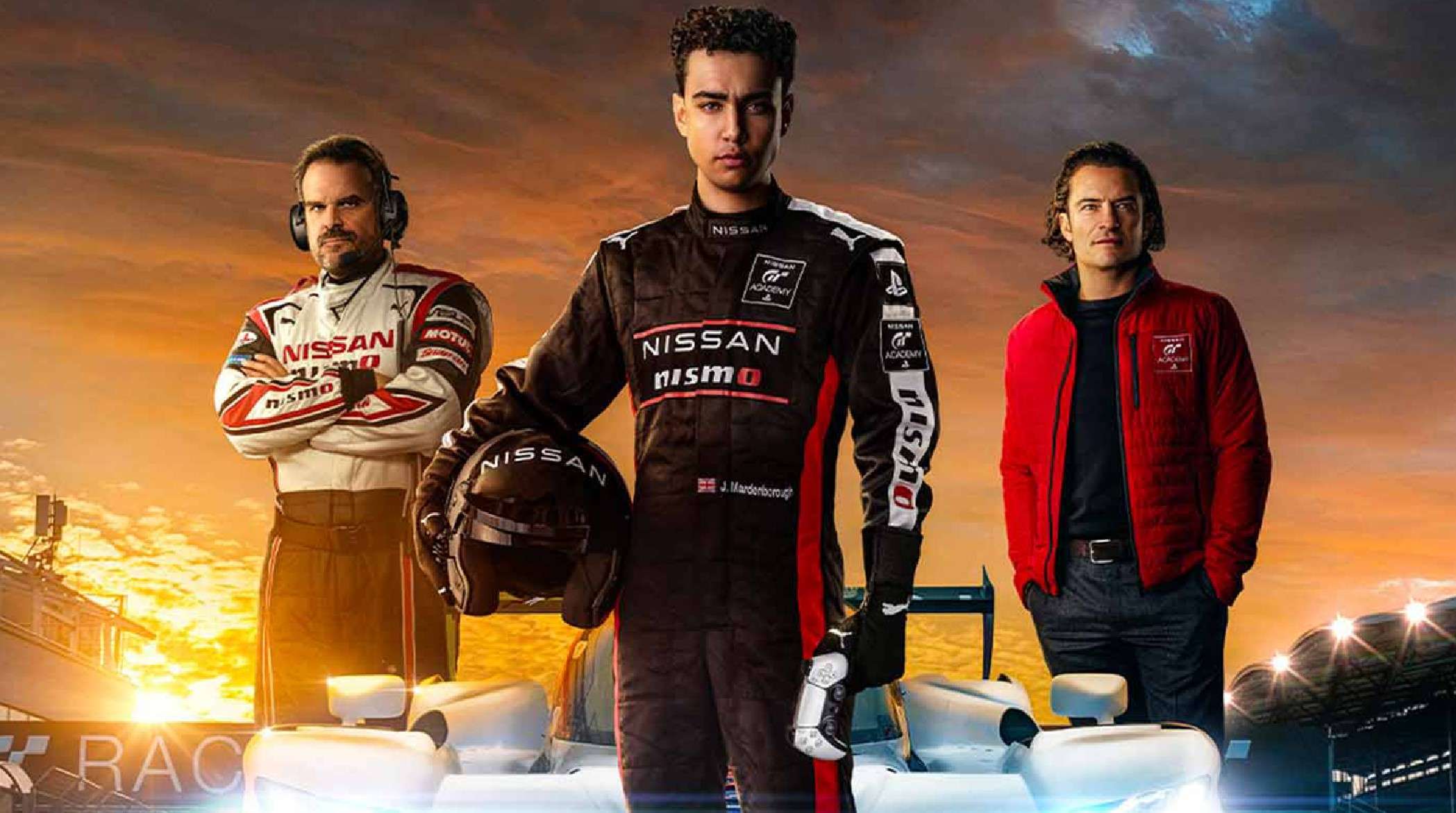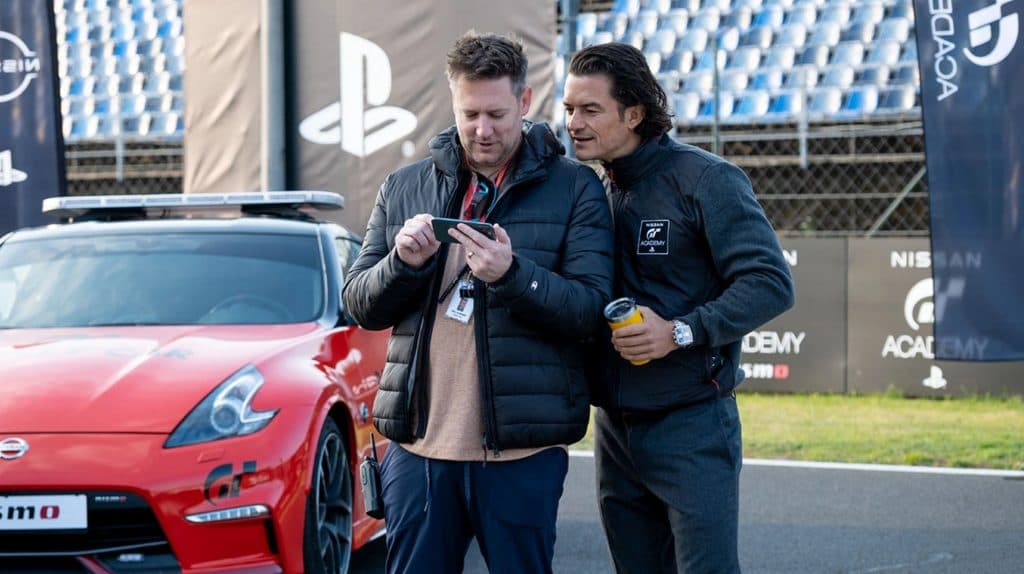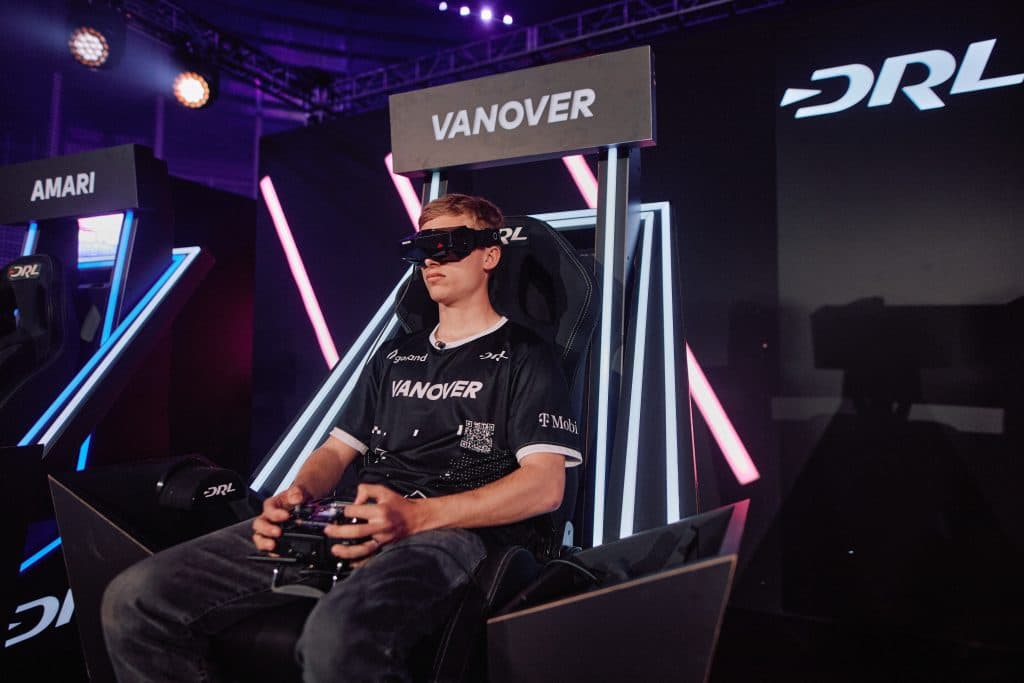Interview: How Neill Blomkamp’s Gran Turismo leverages FPV drones in a way no movie has before
 Sony Pictures
Sony PicturesWith a story of championship-caliber racers on the track in Sony Pictures’ forthcoming Gran Turismo comes a story of championship-caliber racers behind the camera, though perhaps not as you’d expect. Famed director Neill Blomkamp set out to recruit the world’s leading drone racers in an effort to push the boundaries with his latest flick and we spoke with 2019 Drone Racing League champ Alex Vanover to learn of his efforts on the upcoming blockbuster.
As you would expect from a live-action film in PlayStation’s iconic Gran Turismo series, speed is at the heart of everything. From flooring it in the virtual realm to pushing the pace on real-world racetracks, it’s all about going fast, and what better way to capture it all in motion than with some of the fastest-moving technology in the world?
As drone racing boosts into focus, with the emerging sport rapidly catching on in recent years, Hollywood director Neill Blomkamp recognized an opportunity to leverage the fast-growing industry for his fast-paced film.
2019 Drone Racing League (DRL) World Champion Alex Vanover was one such expert that got the call and joined the film’s crew. From how drones were utilized in day-to-day production to a look at how the team innovated with previously impossible shots, we sat down to learn all about his work on the upcoming Gran Turismo movie.
Bringing drones to cinema
As drone racing has grown exceedingly popular, other branches in the drone community have also begun to unfurl. After hoisting the trophy at the 2019 Drone Racing League World Championship event, Vanover looked to one of these branches in order to help grow his brand beyond just the competitive scene.
Through first capturing “freestyle” videos, a method of flying without a defined path, simply reacting in the moment while performing unbelievable movements at high speed, an act he compares to skateboarding, Vanover then discovered a new passion for making cinematic videos. “This was right at the beginning of when FPV drones (First-Person View) became popular,” he explained.
After just a few short months honing his skills in that discipline, “phone calls and DMs” began piling up from “producers, directors,” and the like, helping him break new ground with drone sequences filmed for music videos involving Justin Bieber, Kid Laroi, and others. From there, “the rest is history,” Vanover said, as his career trajectory then led to work on major productions like Michael Bay’s Ambulance, the Will Smith-led Emancipation, and most recently, Gran Turismo.
“I’ve really only been in this industry for two and a half years but I’ve thankfully been able to accomplish so much. I’m still so young in this industry and I’ve got many more years to go. We’re just building platforms a lot to bring new elements to people so that we can capture these stories in a different way.”
Flying through racetracks on Gran Turismo
The decision to leverage drone technology in filming Gran Turismo was seemingly made early on, as director Neill Blomkamp had seen some of Vanover’s shots in previous films and “wanted something like that on his movie.” Though the decision to have Vanover specifically flying said drone technology came up at the very last second, he explained.
“We heard about [Gran Turismo] first in October of last year. I think they wanted to use local pilots, being in Europe. Then I got a call from Lightcraft one night, they said ‘Can you get on a plane ASAP? I was expecting it to be a pretty quick turnaround, like a couple of days for the amount of gear we bring. ‘Well, there’s a 5AM direct flight out of LAX tomorrow,’” they told him, and from there, it was off to the races, quite literally.
“It was myself and a couple of other members from Lightcraft. What was only supposed to be about a week ended up turning into five weeks, and that was five to six days a week as well, so it was a lot of filming.”
With call times requiring drone pilots on set by 7AM each day and to be there through until 5PM, that’s assuming “there wasn’t overtime by the way,” Vanover and the rest of the drone crew were certainly kept busy during Gran Turismo’s production. Despite the physically “exhausting” schedule, all scattered across Europe too as production jumped between Hungary, Slovakia, Austria, Germany, and many more destinations, Vanover was thrilled to be keeping busy as the workload kept him vigilant day in and day out.
“It’s not too taxing if you’re busy, believe it or not. When you’re shooting and we’re flying these drones at 150MPH, chasing these racing cars around, there’s something so exciting about it, you generally don’t think about how tired you might be or how long you’ve been there, it’s just fun. And when you’re working in a team as well, you’re there motivating the other people around you and vice versa.
“On top of that, you’re working with the best camera operators in the world, best racecar drivers, best director, you’re working with the best in the film industry. So all of that combined, it doesn’t really get tiring on the mental side of things.”
 Sony Pictures
Sony PicturesHaving the creative freedom to push boundaries
Given the use of drones in blockbuster Hollywood films is still fairly new, not everyone involved in the production is going to be familiar with best practices just yet. When should drones be used? What type of shots work best with drones involved? Where should they be pathing to capture the action in the best way possible? Having the creative control to solve these dilemmas on Gran Turismo helped Vanover not only push technology forward in new ways, but also devise innovative shots never before seen on a big screen, he told Dexerto.
“Honestly, Neill and I worked super well together on set,” Vanover said. “It didn’t take very long for him to understand what we can do with the FPV drones. He gave us a lot of creative control to come up with our own shots.
“We weren’t just flying your typical FPV drones with a fixed camera on it. We were also flying drones with gimbals and stuff like that. So we were really bringing new camera movement that hasn’t been shown in a movie before. You’re not going to see typical FPV shots, you’re going to see gimbal shots at high speed that you normally wouldn’t see because most gimbal drones can’t go 100MPH. We were able to build drones that were able to do that. We built a lot of them on-site as well. So it was a very exciting challenge. Constant new challenges, constant new innovation.”
Of course, this degree of freedom had to be earned on set, however. Vanover explained how in the early days of filming for Gran Turismo, there was a fair amount of ‘handholding’ for those in other cinematographical disciplines. Though eventually, that became less common as the drone experts showcased their skills in person.
“At the beginning of the movie it was ‘Ok, this is the shot that’s storyboarded, we need the drone to do this and that.’ And of course, we can do that. But a lot of the time, because FPV is so new, these scriptwriters don’t understand what a drone can and can’t do, but also what looks good, and what doesn’t look good.
“By the end of the movie, it would be something as simple as ‘make sure you capture this car,’” Vanover joked.
Drone racing mirrors Gran Turismo’s story
Coincidentally enough, while the high-octane rush of drone racing largely mirrors the adrenaline high found in other motorsports, the very plot of the upcoming Gran Turismo movie itself also reflects the ‘path to pro’ of the burgeoning drone racing scene.
The upcoming film takes inspiration from the real story of British racecar driver Jahn Mardenborough. Having begun his career on the virtual tracks in GT Academy, Mardenborough outclassed 90,000 competitors to claim victory in an online competition, securing himself a spot on Nissan’s racing team.
This real-world success story is at the heart of the upcoming Gran Turismo film, but it’s also a story the world of drone racing is replicating too. Beyond flying physical drones at ludicrous speeds through wild obstacle courses, anyone can get in on the action through virtual competitions thanks to Drone Racing League simulations on all platforms, Vanover explained. And much like the GT Academy example which has now inspired a feature film, the Drone Racing League also offers up real contracts for the best virtual racers.
 Drone Racing League / Joe Lemke
Drone Racing League / Joe Lemke“In line with Gran Turismo, you can win a DRL contract through winning in the simulator. It’s for everybody, you don’t have to be a 6ft athlete or naturally gifted, you just have to have passion, dedication, and discipline.”
Raking up close to a billion video views across social media last year, while also tripling its annual downloads for the virtual drone racing game, it’s evident interest in the space is only continuing to grow. Perhaps it’s only a matter of time before drone pilots become the focal point of their own Hollywood blockbuster.